
| Geranium Plume Moth (one synonym : Oxyptilus diffusalis Walker, 1864) PTEROPHORINAE, PTEROPHORIDAE, PTEROPHORIOIDEA | (donherbisonevans@yahoo.com) and Debbie Matthews & Stella Crossley |
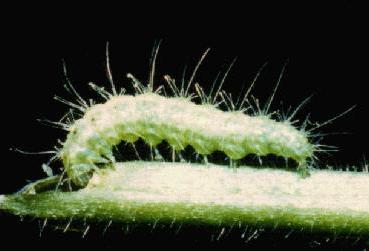
(Photo: Don Herbison-Evans, Manly, New South Wales)

| Geranium Plume Moth (one synonym : Oxyptilus diffusalis Walker, 1864) PTEROPHORINAE, PTEROPHORIDAE, PTEROPHORIOIDEA | (donherbisonevans@yahoo.com) and Debbie Matthews & Stella Crossley |

(Photo: Don Herbison-Evans, Manly, New South Wales)
This is a tiny green or brown Caterpillar which is covered in long white scale-like bristles which are modified setae. It may have a reddish line down its back. It usually feeds by tunneling into the flower buds of its food plants. From Gympie to Sydney it is a pest on:
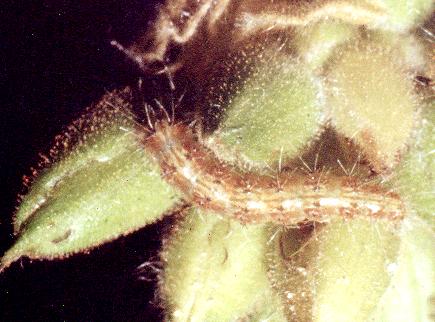
and it is also known to feed on various other plant species (especially the flower buds and flowers) including :
The Caterpillar grows to a length of about 1 cm.
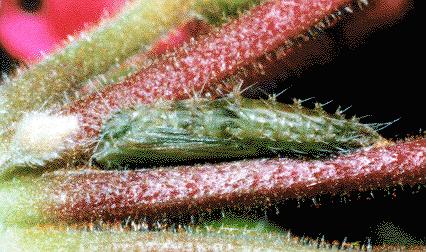
The pupa is formed on the stalk of an eaten flower bud. It has no cocoon but is attached to the stalk by a cremaster. Its colour is green with brown patches, and it is spiny, being covered with white setae. When pupation is complete, the discarded Caterpillar skin is left crumpled up at the tail end. The pupal period is about a week.
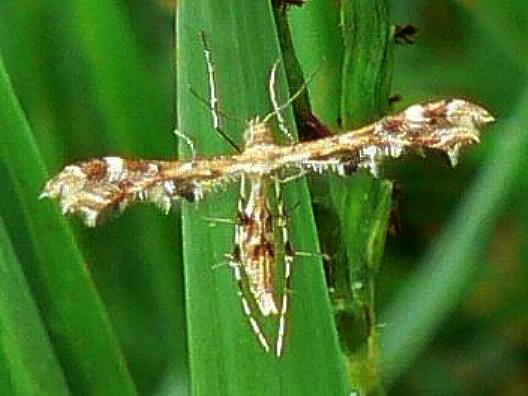
The adult moths have a wingspan of about 1 cm. The fore and hind wings are each composed of feather-like plumes. These are buff with brown marks. The fringes on the hindmargin of forewing have black sections. The hind plumes each have a long black mark on the plume-tip. The legs are very long and carry tibial spurs. When resting, the moth sits with its abdomen curved up into the air,and its wings held at right angles to the body with the plumes folded, which makes it look remarkably like a piece of grass.
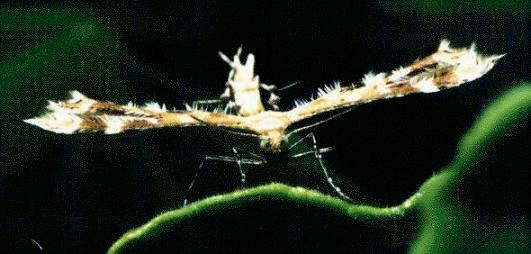
The species is known the world over, for example in :
In Australia, it has been found in :
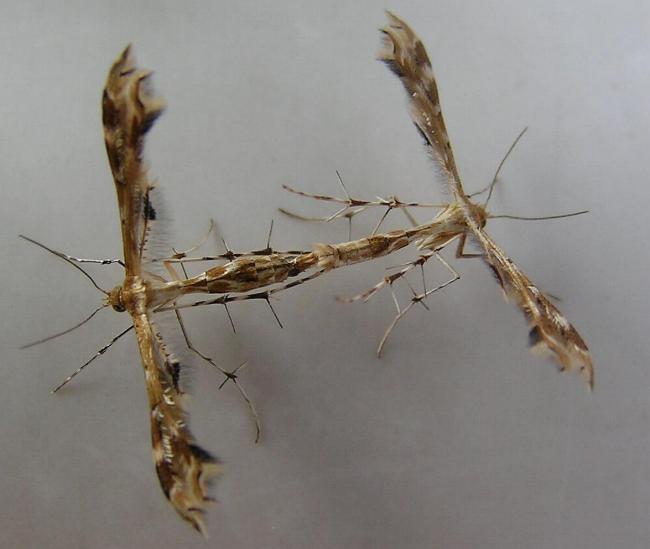
Further reading :
J. Cassani, D.H. Habeck, and D.L. Matthews,
Life history of a plume moth Sphenarches anisodactylus (Lepidoptera: Pterophoridae),
Florida Entomolologist, Volume 73, Number 2 (1990) pp. 257-266.
Ian F.B. Common,
Moths of Australia,
Melbourne University Press, 1990, Fig. 30.17, p. 333.
Buck Richardson,
Tropical Queensland Wildlife from Dusk to Dawn Science and Art,
LeapFrogOz, Kuranda, 2015, p. 185.
Francis Walker,
Tineites,
List of the Specimens of Lepidopterous Insects in the Collection of the British Museum,
Part 30 (1864), pp. 934-935, No. 18.
 caterpillar |  butterflies |  Lepidoptera |  moths |  caterpillar |
(written 17 August 1996, updated 27 July 2024)